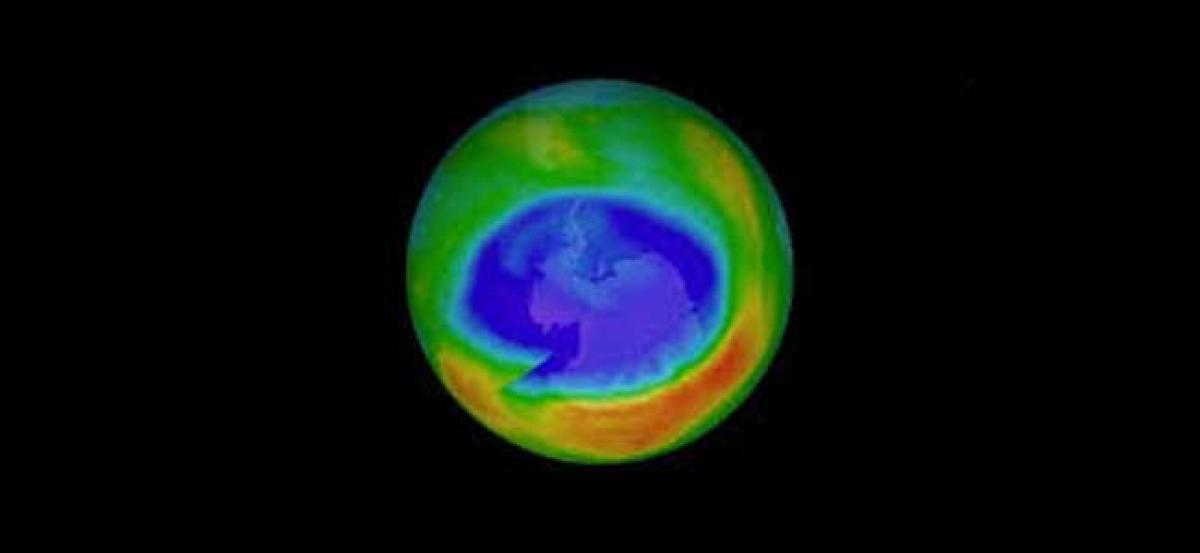Ray of hope as ozone layer recovery on track, world safer than in 1980s

The world is falling apart The future of humanity is hanging on a cliff, on the edge of catastrophe But there still is hope and a window of opportunity to take action That sounds like a stereotypical UN moralising rhetoric on climate change or loss of biodiversity
Read this: "The world is falling apart. The future of humanity is hanging on a cliff, on the edge of catastrophe. But there still is hope and a window of opportunity to take action." That sounds like a stereotypical UN moralising rhetoric on climate change or loss of biodiversity.
Now read this: "We have successfully overcome the challenge on the long-term basis, but we have now to build on that success and stay put to gain more benefits." This sounds like a private sector CEO's statement at a shareholder's meeting. But that's exactly what happened at a UN meeting on November 5. A rare declaration coming from any UN meeting.
A press note on that day said: "The findings of a new UN-backed report released today revealed the ongoing healing of the ozone layer are being hailed as a demonstration of what global environmental agreements can achieve, and an inspiration for more ambitious climate action to halt a catastrophic rise in world temperatures." The report warned that a full recovery of the ozone layer demands continued efforts by all countries to comply with the Montreal Protocol.
The ozone layer, a thin shield 15-45 km above the earth, protects life on earth. It was put on the path of recovery due to the globally-agreed actions that did not remain on paper as in case of climate change but were implemented as per the agreed schedule under the historic Multilateral Environmental Agreement called the Montreal Protocol.
The agreement was carved out over 30 years ago in response to the revelation that chlorofluorocarbons (CFCs) and other ozone-depleting substances -- used in aerosols, cooling and refrigeration systems, and many other items -- were piercing a hole in the ozone layer and allowing life threatening ultraviolet (UV) radiation to flood through on the earth. The consequences of such high-energy UV rays included higher incidences of skin cancers, cataracts, loss of immune systems and lower production of food on land and fish in the oceans.
Good news came from a place nearer the stratosphere, 10,000 feet above sea-level in Quito, the capital of Ecuador. A quadrennial scientific assessment jointly done by United Nations Environment (UNE) and the World Meteorological Organisation (WMO) emphatically reported the continued healing of the ozone hole.
Satellite and ground-level observations by NASA, the NOAA, the European Space Agency and scores of the weather stations around the globe have clearly divulged that the world is now safer than what it was in 1980s -- at least from a deadly attack of the UV rays. Recovery of the ozone layer has been up to three per cent per decade since the start of the 21st century.
Indeed, this good news amidst global turmoil in environmental degradation is more than simply encouraging. It is the singularly successful outcome of the unique international agreement, that may inspire to take action on climate change. The global community has worked collectively to achieve this result. Actions under the Montreal Protocol over last more than 30 years have led to sustainable decreases in the atmospheric abundance of ozone-depleting substances (ODSs) like CFCs.
In the inspiring words of Erik Solheim, head of UN Environment: "The Montreal Protocol is one of the most successful multilateral agreements in history for a reason i.e. the careful mix of authoritative science and collaborative action that has defined the Protocol for more than 30 years, was set to heal our ozone layer." That said it all.
At projected rates, the Northern Hemisphere and mid-latitude ozone layer is scheduled to completely heal by the 2030s followed by the Southern Hemisphere in the 2050s and polar regions by 2060.
The CFCs and other phased-out ODS are now part of the history book. The principles deployed in implementation of the Montreal Protocol are now part of the guidelines for future sustainability.
On January 1, 2019, riding on the white-horse of success, the Montreal Protocol will enter in the arena of climate change. Called the Kigali Amendment of 2016 to the Montreal Protocol, it would now engage itself in the efforts to phase-out of HFCs, powerful global warming/greenhouse gases (GHGs), introduced to implement the "successful" Protocol.
In a way, the Montreal Protocol transformed itself from being an ozone-specific treaty to a climate treaty. Even there too, it is slated to contribute immensely to the Paris Climate Agreement of 2016.
Full compliance to the Kigali Amendment would reduce future global warming due to HFCs by about 50 per cent between now and 2050 compared to a scenario without any HFC controls.
This is critically important when the world is struggling from the shock with a stark warning from the Intergovernmental Panel on Climate Change (IPCC) which found that just 12 years (which coincides with 2030 -- an end point for SDGs) remain to limit global warming to 1.5 degrees Celsius beyond which the impact of a further rise in global temperatures will begin to have an increasingly extreme impact on human society and ecosystems.
The IPCC report offered the clearest evidence to date of the drastic difference between the 1.5 degrees Celsius and 2 degrees Celsius scenarios. The Montreal Protocol may as well turn out to be master saviour of the world from climate change.
The recovery of the ozone layer heralds a message that collective action to discharge the common but differentiated responsibilities could successfully face the climate challenge.
(Rajendra Shende is Chairman, TERRE Policy Centre and a former UNEP Director. The views expressed are personal. He can be contacted at [email protected])














